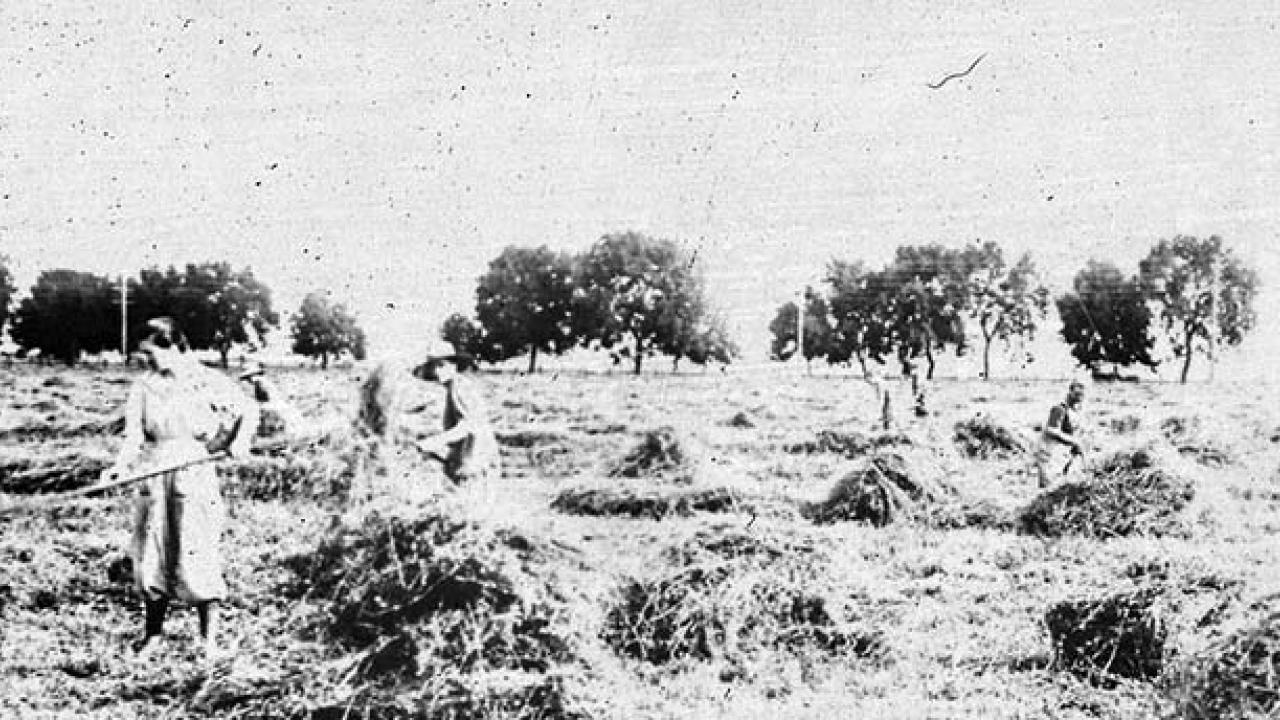Quick Summary
- Before students arrive in 1908, faculty dig experimental irrigation ditches
- Varieties of wheat, oats, barley and tomatoes are tested
- UC researchers collaborate with USDA to improve wheat yield
As the campus nears its 2008–09 centennial celebration, we take a look back at what was happening 100 years ago.
Even before the first buildings were finished — and more than a year before the first students would arrive — the University Farm began laying the groundwork for its first research projects.
UC scientists dug experimental irrigation ditches and planted varieties of wheat, oats, barley and tomatoes. Soon to follow would be test crops of sugar beets, legumes and an array of fruit and almond trees.
Focus on a pressing agricultural problem
Just shovelsful of dirt and ordinary seeds (though some new wheat varieties came from Russia). Yet, even with those unceremonious beginnings, the University Farm turned its attention — and scientific methods — to addressing a pressing agricultural problem with profound economic, environmental and social implications for the state.
A wheat boom of the late 1800s — “California’s second gold rush,” as David Vaught, Ph.D. ’97, an associate professor of history at Texas A&M University, calls it — had gone bust. California had been one of the nation’s leading wheat producers in the 1870s and 1880s, and dryland wheat farming made some growers wealthy. But by the turn of the century, prices had dropped so low that farmers lost money and began replanting their wheat fields with fruits, vegetables, nuts and other crops.
Wheat destroys soil fertility
“Wheat is a crop that rapidly destroys the fertility of the soil, and much of the land in the Central Valley had produced so many crops of wheat by the 1890s that the soil was exhausted,” said Donald Pisani, Ph.D. ’75, Merrick Chair of Western American History at the University of Oklahoma.
“Virgin soil that produced as much as 50 bushels an acre in the 1870s produced 10 or 15 bushels after a decade or so.”
Once a major wheat exporter, California had became a net importer, and in 1905, the state Legislature passed a bill giving UC $10,000 over two years for research to improve production of wheat and other cereal crops.
University Farm collaborates with USDA
At the University Farm, UC researchers worked in collaboration with the U.S. Department of Agriculture in testing not only new varieties and best cultivation methods, but also ways to restore worn-out soil.
A 1911 report that grew out of the cereal research, “How to Increase the Yield of Wheat in California” by UC agronomist G.W. Shaw, documented the benefits of rotating crops and the use of “green manure” or cover crops, such as peas, rye and vetch, to restore humus, fix nitrogen and improve the moisture content of the soil.
Other research, also done in cooperation with the USDA, evaluated different lining materials for irrigation ditches to reduce seepage and conserve water.
This story was originally carried in the summer 2007 UC Davis Magazine.
